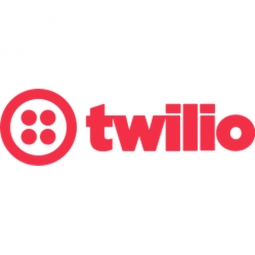Technology Category
- Networks & Connectivity - NFC
Applicable Industries
- Retail
Use Cases
- Retail Store Automation
- Time Sensitive Networking
Services
- System Integration
About The Customer
Blue Pin's primary customer in this case study is a well-known five-star hotel in Hong Kong. The hotel, which has 700 guest rooms, was facing challenges with the traditional check-in process and ineffective communication channels. With the implementation of Blue Pin's solution, the hotel reported that 40% of their guests use the self-service platform to check in and out. The hotel sends at least 200 WhatsApp messages to guests for check-in and check-out alone, adding up to an estimated 6,000 WhatsApp messages per month. Blue Pin's solution is also deployed in Australia and is being implemented in a hotel in Singapore.
The Challenge
Hotels strive to provide a memorable stay for their guests, but the check-in process can often be a tedious task. The traditional method of checking in, which involves interacting with front desk staff, can take up to ten minutes. This not only wastes the guests' time but also puts a strain on the hotel's staffing resources. Furthermore, communication between the hotel and guests was primarily through voice calls or emails, which proved to be ineffective. Hong Kong-based software and robotics company, Blue Pin, identified these challenges and aimed to streamline the check-in process and improve communication channels.
The Solution
Blue Pin developed a self-service solution that significantly reduces the check-in time. With this solution, guests can pre-register and pay for their accommodations before arriving at the hotel. Upon arrival, they present a check-in QR code to a robot in the lobby, which verifies their documents and provides them with their room key. This process takes only five minutes, cutting the traditional check-in time by half. In addition to this, Blue Pin introduced a new communication channel - WhatsApp. Using Twilio’s WhatsApp API, the hotel can send targeted messages to their guests based on their behavior, preferences, and previous purchases. This includes upsells and cross-sells of hotel services, promotions, discounts, and special offers. Blue Pin is also developing a feature that allows guests to request in-room services via WhatsApp.
Operational Impact
Quantitative Benefit

Case Study missing?
Start adding your own!
Register with your work email and create a new case study profile for your business.
Related Case Studies.

Case Study
Improving Production Line Efficiency with Ethernet Micro RTU Controller
Moxa was asked to provide a connectivity solution for one of the world's leading cosmetics companies. This multinational corporation, with retail presence in 130 countries, 23 global braches, and over 66,000 employees, sought to improve the efficiency of their production process by migrating from manual monitoring to an automatic productivity monitoring system. The production line was being monitored by ABB Real-TPI, a factory information system that offers data collection and analysis to improve plant efficiency. Due to software limitations, the customer needed an OPC server and a corresponding I/O solution to collect data from additional sensor devices for the Real-TPI system. The goal is to enable the factory information system to more thoroughly collect data from every corner of the production line. This will improve its ability to measure Overall Equipment Effectiveness (OEE) and translate into increased production efficiencies. System Requirements • Instant status updates while still consuming minimal bandwidth to relieve strain on limited factory networks • Interoperable with ABB Real-TPI • Small form factor appropriate for deployment where space is scarce • Remote software management and configuration to simplify operations

Case Study
How Sirqul’s IoT Platform is Crafting Carrefour’s New In-Store Experiences
Carrefour Taiwan’s goal is to be completely digital by end of 2018. Out-dated manual methods for analysis and assumptions limited Carrefour’s ability to change the customer experience and were void of real-time decision-making capabilities. Rather than relying solely on sales data, assumptions, and disparate systems, Carrefour Taiwan’s CEO led an initiative to find a connected IoT solution that could give the team the ability to make real-time changes and more informed decisions. Prior to implementing, Carrefour struggled to address their conversion rates and did not have the proper insights into the customer decision-making process nor how to make an immediate impact without losing customer confidence.

Case Study
Digital Retail Security Solutions
Sennco wanted to help its retail customers increase sales and profits by developing an innovative alarm system as opposed to conventional connected alarms that are permanently tethered to display products. These traditional security systems were cumbersome and intrusive to the customer shopping experience. Additionally, they provided no useful data or analytics.

Case Study
Ensures Cold Milk in Your Supermarket
As of 2014, AK-Centralen has over 1,500 Danish supermarkets equipped, and utilizes 16 operators, and is open 24 hours a day, 365 days a year. AK-Centralen needed the ability to monitor the cooling alarms from around the country, 24 hours a day, 365 days a year. Each and every time the door to a milk cooler or a freezer does not close properly, an alarm goes off on a computer screen in a control building in southwestern Odense. This type of alarm will go off approximately 140,000 times per year, equating to roughly 400 alarms in a 24-hour period. Should an alarm go off, then there is only a limited amount of time to act before dairy products or frozen pizza must be disposed of, and this type of waste can quickly start to cost a supermarket a great deal of money.

Case Study
Supermarket Energy Savings
The client had previously deployed a one-meter-per-store monitoring program. Given the manner in which energy consumption changes with external temperature, hour of the day, day of week and month of year, a single meter solution lacked the ability to detect the difference between a true problem and a changing store environment. Most importantly, a single meter solution could never identify root cause of energy consumption changes. This approach never reduced the number of truck-rolls or man-hours required to find and resolve issues.




